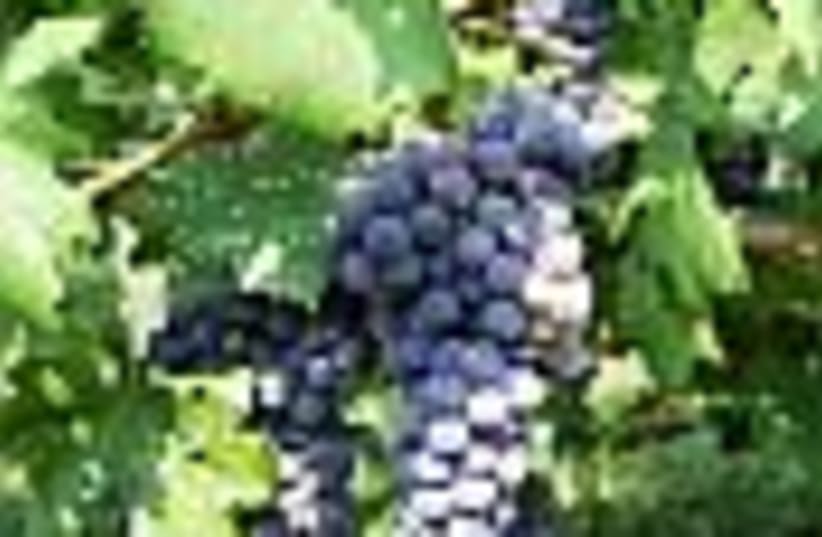Wine has always played an important part in daily life in Italy. In fact, until the late 80s, it was inconceivable to serve a meal without it, so to consider the history of wine in Italy is to consider the history of Italy itself.
The "land at the f oot of the mountains," which is how Piedmont translates, is a wine lover's paradise tucked in northwest Italy at the foot of the Alps.
With wine grown in more than 45 different areas, Piedmont is the region that produces the largest number of best know n, noble, and world-appreciated prize-winning wines, such as Barbera, Barolo, and Barbaresco. Most of its wines are produced on family estates made up of relatively small parcels of land.
The real story of Barolo and Barbaresco is of the grape varietal from which they are both made: Nebbiolo. Considered as Italy's noblest red grape variety, Nebbiolo is bigger, darker, and more tannic than most types.
Native to Italian home and the most famous appellation of Piedmont, very few Nebbiolo cuttings and c lones have been exported to other countries. Cultivated since the 14th Century in the Lombardy region, north of Lake Como, this is the only region where Nebbiolo is grown in Italy outside Piedmont.
No region outside Italy has yet shown much potential f or high quality wine production from this grape.
There is a popular legend that explains the origin of the name Nebbiolo concerning a monk, who cultivated a small vineyard from which he obtained the little wine that he drank himself. One morning, he found that the garden and vineyard were hidden by a thick fog. He saw that phenomenon as a sign that the Lord was angry with him, and he therefore ceased cultivating the earth to dedicate himself entirely to prayer.
According to the legend, when the fog dissipated at harvest time, it revealed clusters of grapes, now ripe, that gleamed like gems in the sunlight.
However, the more believable explanation is that the variety's name is derived from the mists (nebbia) that are customary to Piedmont vineyard s on cool mornings during the harvest period.
There is an alternative explanation that the name simply comes from the word "nobile," Italian for "noble."
Despite of its reputation, Nebbiolo is one of the more problematic grapes for both vintners and winemakers. It is very sensitive to soil and climate and can yield wines that vary widely in body, tannin and acidity.
Both Barolo and Barbaresco are big, bold red wines with definitive full-bodied appeal, high acidity levels, firm, and are categorize d as dry red wines.
The Barolo district consists of several medieval villages with many microclimates and soils, providing several variations in flavor and aroma that are further accented by the differing styles of the winemakers.
"King of wines and wine of kings," that what they called Barolo, is today the most important of the Nebbiolo wines. Under the Italian government control over the origin and production of the wines (DOC and DOCG), Barolo must be aged at least three years prior to release, w ith at least two years in cask; if aged four years, it is allowed to be called Riserva. The charm of this complex wine shows best with proper aging, and when young it has a strong taste of tannin.
In the 80s, a promising group of young Piedmontese wine makers took it upon themselves to give Barolo a more modern face. They changed the methods of pressing, and allowed the wine to mature in small casks made of new wood, which made it more mellow and more attractive when young.
ANGELO GAJA, owner and president of the Gaja Winery, is a fourth-generation Piedmontese winemaker. Internationally acknowledged as one of Italy's and the world's greatest winemakers, Angelo Gaja has been responsible for bold innovations in the vineyards and the cellars. Gaja i s known for producing elegant, opulent wines that are true to their origins, and he is a pioneer in the production of single-vineyard wines in Piedmont. Having studied in France, Gaja was responsible for the introduction of temperature controlled fermentation, malolactic fermentation and French casks, not to mention the use of French varieties such as Cabernet Sauvignon and Merlot.
In 1995, he purchased ten hectares of prime land in Barolo (Gromis Estate in La Morra) which is devoted to the production of Barolo.
The Gaja Gromis is full-bodied dark red wine with classic Barolo characteristics. It features complex aromas of wild berries, vanilla, licorice, spice and truffles and has a long rich finish. NIS 295.
The winery of Poderi Aldo Conterno is situated in Monforte d'Alba, in the heart of the Barolo region. Aldo Conterno's family has been producing and aging the great Piemontese wines for more than five generations.
Aldo Conterno believes that great wine begins in the vineyard, and follows t raditional practices at his estate. Together with the aid of his three sons, Conterno vinifies grapes exclusively from their own vineyards located in Bussia Soprana, an area in the Commune of Monforte d'Alba. The winery produces classically styled red win es, using modern equipment with sophisticated stainless steel tanks as well as French casks.
Aldo Conterno's Barolo Bussia Soprana 2000 followed three years of ageing in Slavonian oak casks, and was refined for 12 months in the bottle before being rele ased for sale. An intense garnet red color with orange reflections, it has a rich, full, sustained perfume, and a complete, austere, harmonious flavor. NIS 295.
Both wines are imported to Israel by Shaked company and can be purchased at "Derech Hayain" stores. n
